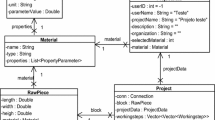Abstract
Machining process planning involves the formation of a set of directions describing the machining operations required to transform raw stock into a finished part. Conventional process planning, performed manually, relies on the knowledge and competence of an experienced process planner and tends to be time consuming and error prone. In the past two decades, much effort has been spent on improving process planning by utilizing the power of a computer to emulate the capabilities of an experienced planner. During the same period, computer-aided design (CAD) and computer-aided manufacturing (CAM) software has been developed to enhance design productivity and to assist the NC code generation facets of the machining process. The entire planning process may be automated be integrating CAD and CAM using computer-aided process planing (CAPP). The research described in this paper outlines the design and development of an intelligent CAPP system integrating two commercial CAD and CAM software packages, Autocad and Mastercam.
Similar content being viewed by others
References
Chang, T. C. (1982) TIPPS—A totally integrated process planning system, Ph.D. Thesis, Virginia Polytechnic Institute, Blacksburg, VA.
Choi, B. K. (1982) CAD/CAM compatible tool-oriented process planning system, Ph.D. Dissertation, School of Industrial Engineering, Purdue University, West Lafayette, IN.
Dunn, M. S. and Mann, M. S. (1978) Computerized production process planning, inProceedings of 15th Numerical Control Society Annual Meeting and Technical Conference, Chicago, IL.
El-Midany, T. T. and Davies, B. J. (1981) AUTOCAP—A dialogue system for planning the sequence of operations for turning parts.International Journal of Machine Tool Design,21(3/4), 175–191.
Guisti, F., Santochi, M. and Dini, G. (1989) Kaplan: a knowledge-based approach to process planning of rotational parts.Annals of the CIRP,38(1), 481–484.
Jakubowski, R. (1982) Syntactic characterization of machined part shapes.Cybernetics,13, 1–24.
Kakazu, Y. and Okino, N. (1984) Pattern recognition approaches to GT code generation on CSG, inProceedings of the 16th CIRP International Seminar on Manufacturing Systems, Tokyo, pp. 10–18.
Kung, H. K. (1984) An investigation into the development of process plans from solid geometric modeling representation, Ph.D. Dissertation, Oklahoma State University, Stillwater, OK.
Lenau, T. and Alting, L. (1986) XPLAN—an expert process planning system, inSecond International Expert Systems Conference, London, 30 September–2 October.
Li, R. K. (1988) A part feature recognition system for rotational parts.International Journal of Production Research,26(9), 1451–1475.
Link, C. H. (1976) CAPP-CAM-I automated process planning system, inProceedings of the 13th Numerical Control Society Annual Meeting and Technical Conference, Cincinnati, OH.
Matsushima, K., Okada, N. and Sata, T. (1982) The integration of CAD and CAM by application of artificial intelligence techniques.Annals of CIRP,31.
Mouleeswaran, C. (1984) PROPLAN—A knowledge based expert system for manufacturing process planning, MS Thesis, University of Chicago, IL.
Niebel, B. W. (1965) Mechanized process selection for planning new designs, ASME 33rd Annual Meeting collected papers, V65. Book 4, Paper No. 737.
Sahay, A., Graves, G. R., Parks, C. M. and Mann, L. (1990) A method for recognizing features in two-dimensional cylindrical part designs.International Journal of Production Research,28(8), 1401–1416.
Srinivasan, R. and Liu, C. R. (1985) Extraction of manufacturing details from geometric models.Computers and Industrial Engineering,9, 125–133.
Tempelhof, K. H. (1979) A system of computer aided process planning for machine parts, SME Technical Paper, Series MS79-154.
TNO (1981)Introduction to MIPLAN, Organization for Industrial Research, Inc., Waltham, MA.
Wang, H. P. and Lin, C. A. (1987) Automatic generation of NC part programs for turned parts based on 2D drawing files.International Journal of Advanced Manufacturing Technology,2(3), 23–35.
Wysk, R. A. (1977) An automated process planning and selection program: APPAS, Ph.D. Thesis, Purdue University, West Lafayette, IN.
Yeo, S. H., Wong, Y. S. and Rahman, M. (1991) Integrated knowledge based machining system for rotational parts.International Journal of Production Research,29(7), 1325–1337.
Zhang, S. and Gao, W. D. (1984) TOJICAP—a system for computer aided process planning for rotational parts.Annals of CIRP,34(1), 299–301.
Author information
Authors and Affiliations
Rights and permissions
About this article
Cite this article
Chow, J.G., Sakal, R.L. An integrated intelligent machining system for axisymmetric parts using PC-based CAD and CAM software packages. J Intell Manuf 5, 93–102 (1994). https://doi.org/10.1007/BF00572402
Received:
Accepted:
Issue Date:
DOI: https://doi.org/10.1007/BF00572402




